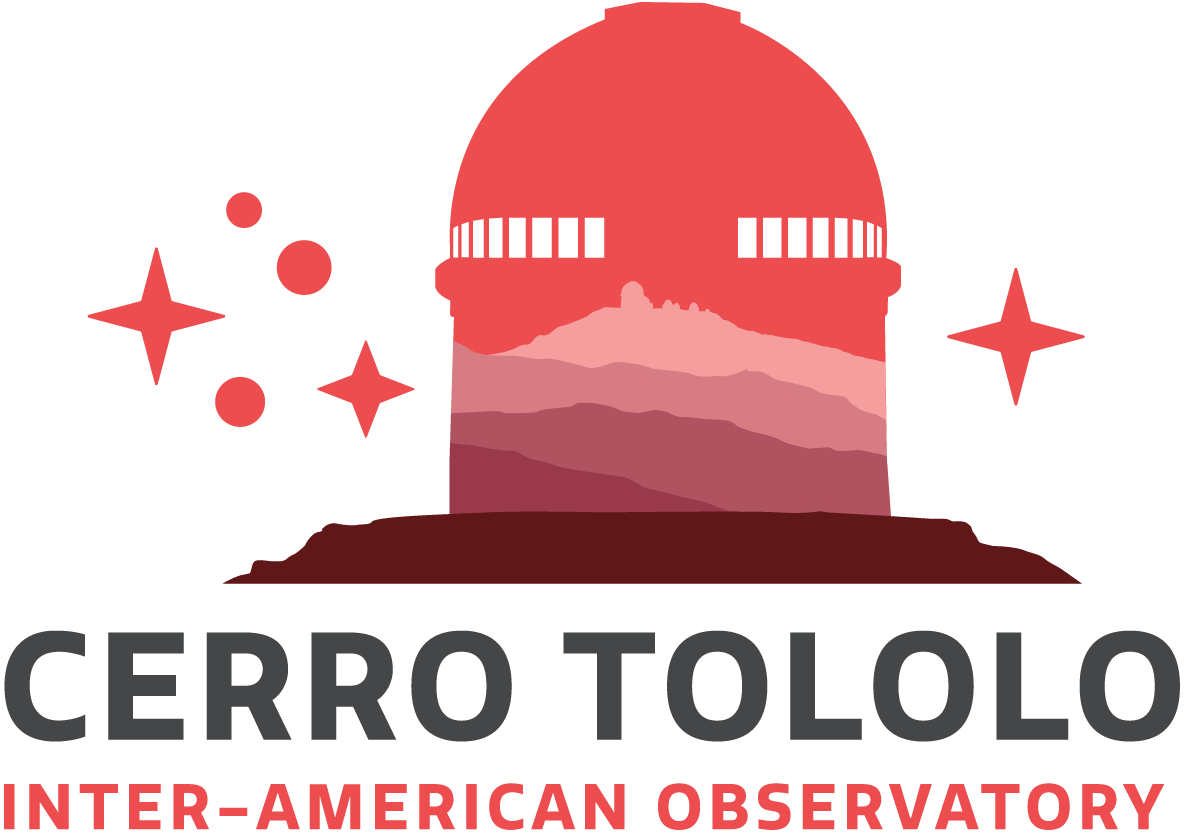SMARTS Telescopes Return to Service
The SMARTS telescopes are back on sky to continue stellar and planetary research programs
20 September 2024
At the U.S. National Science Foundation Cerro Tololo Inter-American Observatory in Chile, a Program of NSF NOIRLab, is a collection of four small telescopes known as the Small and Moderate Aperture Research Telescope System (SMARTS). Between 2003 and 2023, the SMARTS Consortium operated a 0.9-meter Telescope, a 1.0-meter Telescope, a 1.3-meter Telescope, and a 1.5-meter Telescope.
The partners of the original SMARTS Consortium were the American Museum of Natural History, the Association of Universities for Research in Astronomy (AURA), the University of Delaware, Georgia State University, Ohio State University, the Space Telescope Science Institute, Stony Brook University, Vanderbilt University/Fisk Observatory and Yale University.
SMARTS is continuing in a new two-facet structure and the telescopes and their work will live on under two different entities. The 1.5-meter and 0.9-meter will be operated by the Georgia State University Research Foundation and will be known as SMARTS-GSU. University of North Carolina and the Astronomical Research Institute have partnered to operate the 1.0-meter and 1.3-meter, which will now be known as the Planetary Defense Telescopes.
SMARTS-GSU returned to service on 16 August, with astronomer Todd Henry of Georgia State University using the 0.9-meter Telescope, where a long-term program to observe red dwarf stars has been underway since 16 August 1999. To mark the occasion, Henry observed the nearby star GJ 1207, the first star observed 25 years ago, when he and astronomer Phil Ianna kicked off a three-year survey program.
SMARTS-GSU will be used for the RECONS (REsearch Consortium On Nearby Stars) program, which measures the distances to nearby stars and detects unseen companions in orbit around the stars. RECONS has been performing these observations for 25 years, creating an unprecedented catalog of star measurements. The same images used to measure distances and orbits are used to measure brightness fluctuations caused by starspots, revealing cycles similar to our own Sun’s 11-year cycle.
Tyler Linder is at the helm of the 1.0 and 1.3-meter telescopes whose primary mission is to carry out southern skies astrometric follow-up observations of Near-Earth Asteroids (NEAs). In 2017, the 1.0-meter was automated, followed by the 1.3-meter in 2022, thanks to NASA awards for carrying out rapid astrometric and photometric observations of NEAs. Using the 1.0-meter and 1.3-meter together allows not only more asteroids to be monitored each night, but also allows simultaneous observations to rapidly characterize asteroids after discovery.
More information
NSF NOIRLab (U.S. National Science Foundation National Optical-Infrared Astronomy Research Laboratory), the U.S. center for ground-based optical-infrared astronomy, operates the International Gemini Observatory (a facility of NSF, NRC–Canada, ANID–Chile, MCTIC–Brazil, MINCyT–Argentina, and KASI–Republic of Korea), Kitt Peak National Observatory (KPNO), Cerro Tololo Inter-American Observatory (CTIO), the Community Science and Data Center (CSDC), and Vera C. Rubin Observatory (operated in cooperation with the Department of Energy’s SLAC National Accelerator Laboratory). It is managed by the Association of Universities for Research in Astronomy (AURA) under a cooperative agreement with NSF and is headquartered in Tucson, Arizona. The astronomical community is honored to have the opportunity to conduct astronomical research on I’oligam Du’ag (Kitt Peak) in Arizona, on Maunakea in Hawai‘i, and on Cerro Tololo and Cerro Pachón in Chile. We recognize and acknowledge the very significant cultural role and reverence that these sites have to the Tohono O’odham Nation, to the Native Hawaiian community, and to the local communities in Chile, respectively.
Links
- SMARTS–GSU 1.5-meter Telescope
- Planetary Defense 1.3-meter Telescope
- Planetary Defense 1.0-meter Telescope
- SMARTS–GSU 0.9-meter Telescope
Contacts
Josie Fenske
Jr. Public Information Officer
NSF NOIRLab
Email: josie.fenske@noirlab.edu


